Civañāṉa Muṉivar’s Kāñcippurāṇam and Śaiva Temple Culture in Kanchipuram
Jonas Buchholz
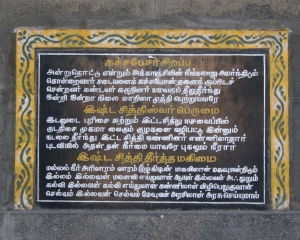
This research project explores the role of Civañāṉa Muṉivar’s Kāñcippurāṇam—the most influential of Kanchipuram’s Tamil talapurāṇams—in shaping the city’s sacred geography. Closely modeled on the Sanskrit Śaiva Kāñcīmāhātmya, the Kāñcippurāṇam portrays Kanchipuram as a city of many temples, recounting the origin stories of nearly one hundred Śiva temples in and around the area. Today, in many of these temples, the Kāñcippurāṇam is cited as an authoritative text that affirms the sanctity of the site. The project investigates how Civañāṉa Muṉivar’s Kāñcippurāṇam has contributed to lived religious culture in Kanchipuram. How has the text shaped the perception of individual temples in Kanchipuram’s religious landscape? Why has the Kāñcippurāṇam, rather than its Sanskrit counterpart, the Śaiva Kāñcīmāhātmya, come to be privileged temple contexts as the primary textual source? Who are the key actors—such as temple priests, local scholars, or devotees—in invoking and transmitting the texts’s authority? By answering these questions, the project offers fresh insights into the function of textual authority in Hinduism and its role in shaping local practices of lived religiosity.
Relations Between the Corpus of Māhātmyas and Prescriptive Religious Literature
Dominic Goodall
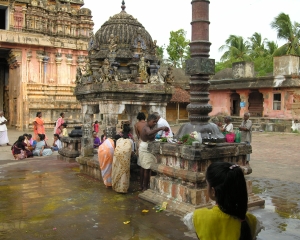
The doctrines of theological traditions, notably those of the Śaivasiddhānta and the Pāñcarātra, figure in the narratives, as do details of liturgy. This raises questions about changes within those religious schools and about their evolving status in the devotional world of pre-modern Kanchipuram. Dominic Goodall participates in all the various reading sessions devoted to the Tamil and the Sanskrit works about the city’s temples, and he reflects on the relations between the corpus of māhātmyas and prescriptive religious literature, both of the Mantramārga and the Śivadharma corpus.
Māhātmya Narratives in Ritual Performances and as a Site of Contestation
Ute Hüsken
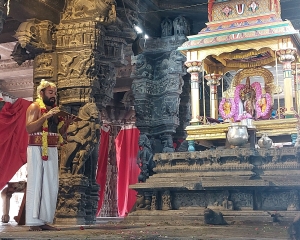
Hüsken studies the contemporary ritual enactments of māhātmya narratives, focusing on the dynamic nature of ritual performances and on ritual's potential not only to re-enact mythological themes but also to negotiate and shape cultural, social, and political realities. Her main foci are Kanchipuram's Viṣṇu temples, their internal dynamics, and their relationship to each other.
Influence of the Works of Kālidāsa on the Kāñcīsthānamāhātmya
Paras Mehta
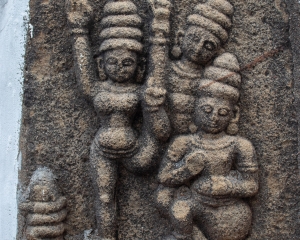
In our observation of the Kāñcīsthānamāhātmya thus far, it is found that it has distinct influences of the great poet Kālidāsa's works, specifically of the Kumārasambhava. Demonstration of such influence in the Kāñcīsthānamāhātmya will establish it as unique among other Sanskrit Māhātmya texts, which are typically not highly poetic. It will also be interesting to investigate whether the influence of the works of other Sanskrit poets such as Bhāravi, Māgha, and Bāṇa is also present in the Kāñcīsthānamāhātmya.
Rhetorical Parallels Between the Kamparāmāyaṇam and Kacciyappa Muṉivar’s Kāñcippurāṇam
Vigneshwaran Muralidaran
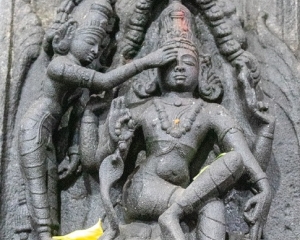
This study investigates the influence of the Kamparāmāyaṇam on Kacciyappa Muṉivar's Kāñcippurāṇam, with particular attention to its adherence to classical Tamil poetic conventions, such as those outlined in the Taṇṭiyalaṅkāram. Beyond following the standard rhetorical prescriptions, Kacciyappa Muṉivar's Kāñcippurāṇam frequently mirrors the content and imagery of the Kamparāmāyaṇam so closely that it invites a deeper investigation. This study aims to analyze select verses from Kacciyappa Muṉivar's Kāñcippurāṇam and highlight their parallels with the Kamparāmāyaṇam. By examining these verses, we will demonstrate how Kacciyappa Muṉivar draws from the Kamparāmāyaṇam in shaping his own narrative and poetic framework, aligning his work with the ideals of a mahākāvya as prescribed by the Tamil literary tradition.
Kanchi and Kalinga - Textual Connections of Wars and Alliances
Aneesh Raghavan
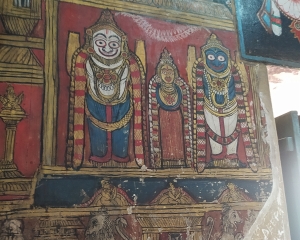
There are several textual and inscriptional references to the land of Kalinga (present-day Odisha) and the city of Kanchipuram from the late classical age, found in both these ancient Odia and Tamil regions, which are situated more than a thousand miles away from each other. Yet, it is supposedly a fifteenth-century Odia text titled Kāñcikabericarita that sows the seed for a strong cultural association with Kanchipuram, which remains stamped in the cultural ethos of Odisha to this very day. The legend of the alliance and war between the king of Puri and the king of Kanchipuram, the consequent presence of the famous Kāñcī-Gaṇeśa in the Jagannath temple at Puri are part of household cultural heritage in Odisha, that find their origins in the Kāñcikābericarita of Puruśottama Dāsa (1550-1600 CE), who refers to this work as the “Kāñcipurāṇa”. It was also during the same time that several Sanskrit māhātmya texts, such as the Kapilasaṃhitā and Ekāmrapurāṇa, were composed in Odisha. These texts share striking similarities with texts connected to Kanchipuram, as they speak of Ekāmreśvara (Shiva under a mango tree) as the presiding deity, just as in the case of the Kāñcimāhātmya of Śaiva affiliation. This study will, therefore, explore the explicit and implicit connections between these two ancient settlements by reassessing Puranic narratives in the light of historical findings, with a special focus on the stories of wars and alliances that appear in the legend of the Kāñcikābericarita.
Tracing the Lineage of Kaccālaiyar, the Author of the Kāñcippurāṇam
T. Rajarethinam
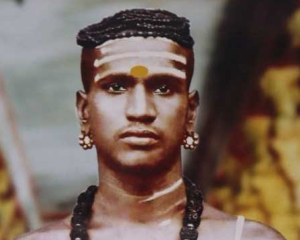
This research explores the origins and lineage of Kaccālaiyar, the author of the Kāñcippurāṇam. The 1983 edition by S.K. Ramarajan lacks information about the author, and sparks interest in the search of his descendants who are supposedly in Pillaiyar Palayam, Kanchipuram, and whose street is called ‘Tēcikar Vīti’ by the locals. Kaccālaiyar’s family maintains a close connection to the Kaccapēsvarar Temple and has published the Kaccapēsvarar Pāmālai, a book of verses by Muthukumārasāmy Tēcikar, Kaccālaiyar’s son. Kāñci. Civa. Catācivam, a descendant of Kaccālaiyar, documented the family’s history in the book's introduction. The Senguntha Mudaliyar community, to which Kaccālaiyar belonged, historically managed the Kaccapēsvarar Temple. Kaccālaiyar’s father, Sachidananda Desikar, held the spiritual title “Desikar,” signifying a householder’s scholarly and spiritual role. Historical evidence, such as a verse referring to the 1877 famine, suggests that Kaccālaiyar lived around 1740. His lineage includes notable descendants, such as Siva. Sadasivam and Mr. Saravana Arumugam, who currently reside in Kanchipuram.
The Inscriptions in Kanchipuram’s Viṣṇu Temples
Babu N. Ramaswamy and K. Vijayavenugopal
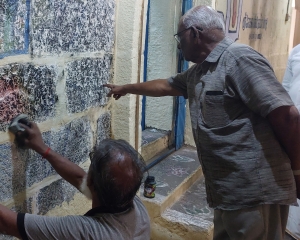
Within the framework of the ERC-funded Dharma project (ERC n ° 809994), K. Vijayavenugopal and Babu N. Ramaswamy will locate, record, transcribe, and translate into Tamil and English the inscriptions of Kanchipuram’s Vaiṣṇava temples. These have been referred to and some have been recorded, but only a few are given in detail in the existing literature. Importantly, often their precise location within the temple remains unclear. The analysis will provide insights into the relation of these (often donative) inscriptions and the māhātmya literature, thereby giving not only clues as to the relative age of the texts and of the narratives that are contained in them but also insights into the shifting patterns of patronage over time.
Decoding the Legends and Rituals of the Kāmākṣī Temple - A Comprehensive Study of Chapter 14 of the Kāmākṣīvilāsa
Vishnupriya Srinivasan
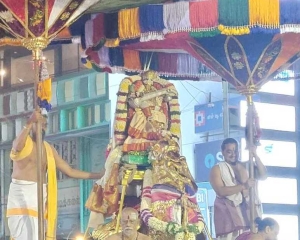
Chapter 14 of the Kāmākṣīvilāsa describes the primary legends associated with the Kāmākṣī Temple, the origin of the different images (mūrtis) of Kāmākṣī, and the rituals, particularly the worship of the Śrī Cakra within the temple’s sanctum sanctorum. The Kāmākṣīvilāsa assumes that readers are already familiar with the underlying legends and the Śrī Vidyā tradition, offering only partial insights through its verses. Vishnupriya Srinivasan proposes to bridge this gap by offering a complete understanding of the legends, the metaphysical significance of the mūrtis, and the worship practices described in Chapter 14 of the Kāmākṣīvilāsa. This will require integrating insights from the Kāmākṣīvilāsa with the Saubhāgyacintāmaṇi, the current ritual manual of the temple, and the Lalitopākhyāna. By aligning these texts, she will provide a thorough analysis of the rituals and their metaphysical underpinnings. Additionally, she will investigate contemporary temple practices by gathering data from temple priests and other sources. This comparative analysis will help to contextualize the ancient descriptions within the framework of current rituals, offering a richer understanding of the temple’s traditions and their evolution over time.
Festivals at the Kāmākṣī temple: A Translation and Multimedia Exploration of the Saubhāgyacintāmaṇi
Vishnupriya Srinivasan and SAS Sarma
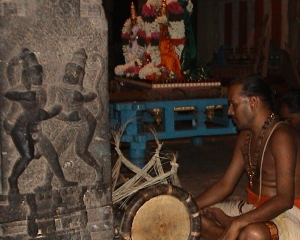
This study aims to create an accessible and comprehensive resource that links the Saubhāgyacintāmaṇi ritual manual with the ritual practices of the Kāmākṣī temple. By focusing on the chapter dedicated to festivals, the researchers will offer a simplified translation of the text, supplemented with detailed notes to enhance understanding. To enrich the textual content, Vishnupriya Srinivasan and SAS Sarma will incorporate photographs and video clips of the referenced events. For instance, when the text discusses specific rituals like bherītāḍana, corresponding images and video clips from an existing collection will be included. This approach not only facilitates a deeper engagement with the manual's content but also effectively utilizes valuable multimedia resources, bridging traditional textual study with digital tools.
The Ulakaḷanta Perumāḷ Temple through its Inscriptions and its Legends
Yunheng Xu
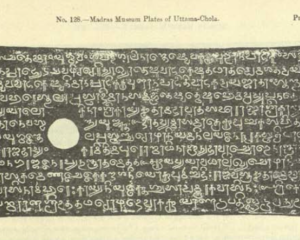
This research project primarily focuses on the inscriptions of the Ulakaḷanta Perumāḷ Temple in Kanchipuram. These materials, namely the “Madras Museum Plates of Uttama Chola” and more than 20 stone inscriptions, will be re-read and reinterpreted, taking into account new research in Tamil Epigraphy in the context of digital humanities. In addition, the research takes into consideration literary sources on the temple including devotional poetry and the Māhātmyas. The study thus investigates the interplay of donative activities and religious beliefs concerning the temple from the 10th to the 14th century, so as to explore the intertextuality among epigraphical, literary, and mythological narratives.


